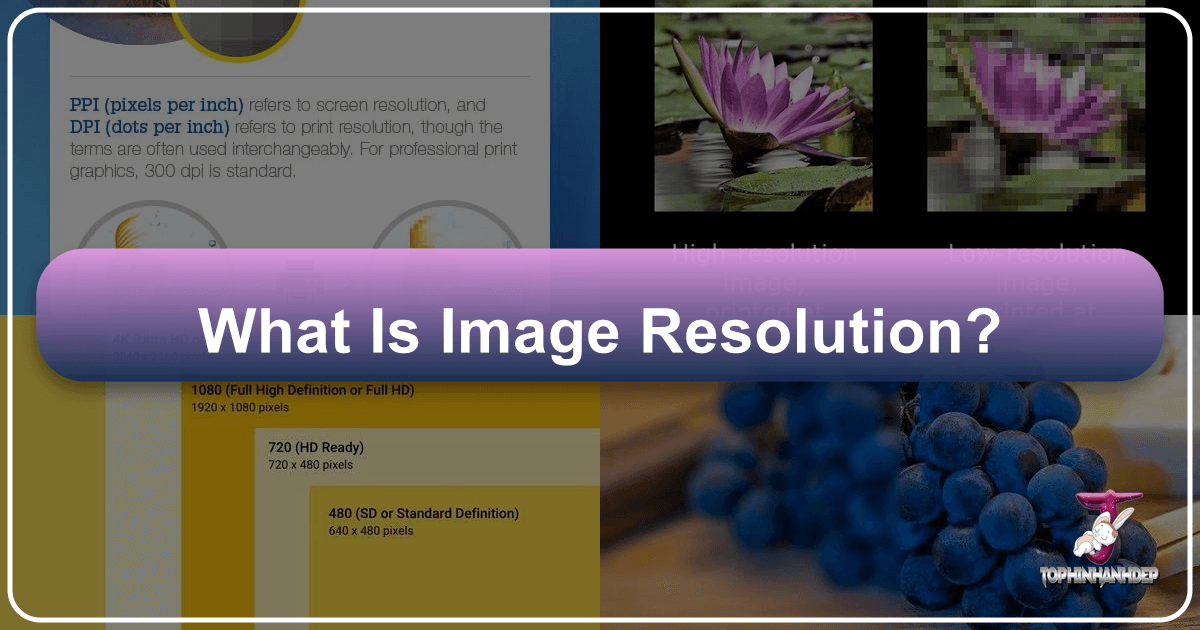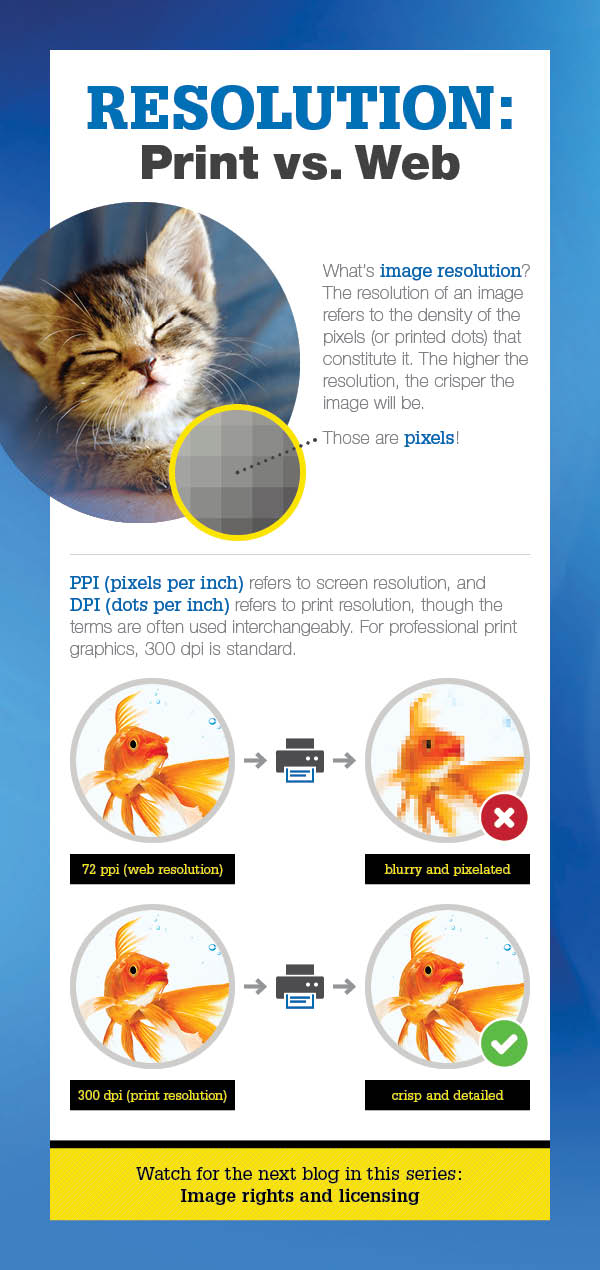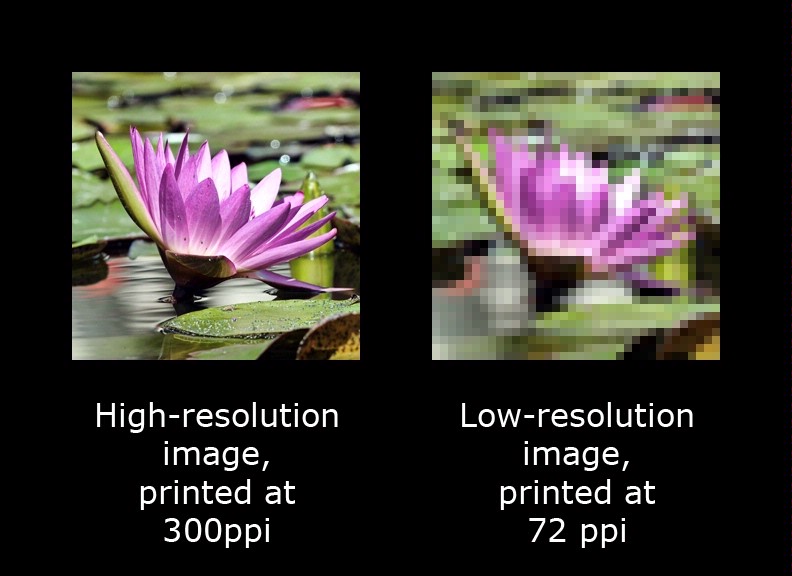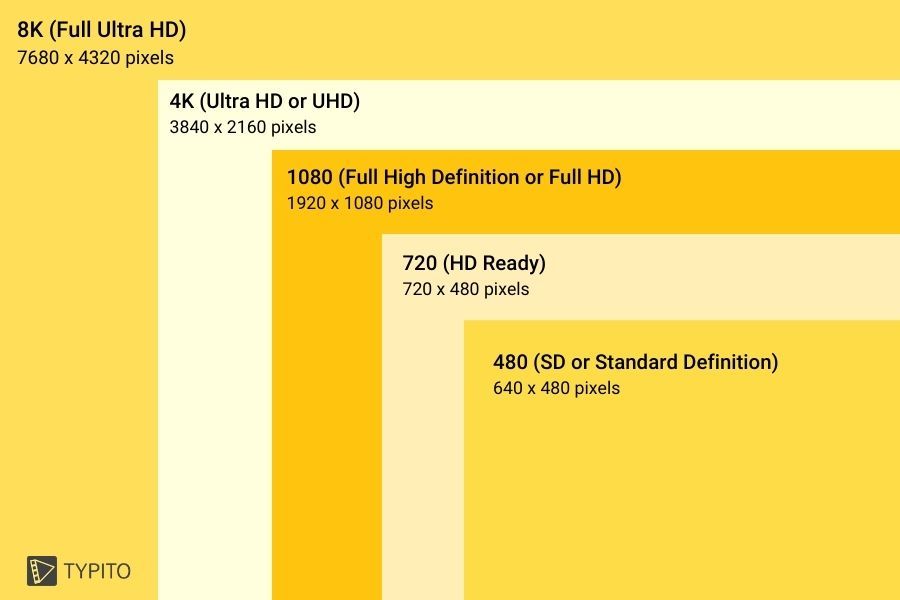The Definitive Guide to Image Resolution: Unlocking Clarity in Your Digital World

In the vast and vibrant landscape of digital imagery, where every pixel contributes to the grand tapestry of visual experience, one term reigns supreme in its importance: resolution. Often bandied about in discussions of cameras, displays, and prints, resolution can initially appear as a perplexing and intricate concept. Yet, for anyone navigating the diverse offerings of Tophinhanhdep.com – from stunning wallpapers and aesthetic backgrounds to high-resolution photography and powerful image tools – a clear understanding of resolution is not just beneficial, but essential.
Resolution is more than just a number; it’s the bedrock upon which image quality, detail, and visual fidelity are built. It determines how crisp your nature photography looks when printed large, how sharp an abstract wallpaper appears on your 4K monitor, and the extent to which you can manipulate a beautiful photograph in a graphic design project without it becoming a blurry mess. This comprehensive guide, crafted with the insights and resources available on Tophinhanhdep.com, will demystify image resolution, empowering you to make informed decisions whether you’re capturing, creating, or consuming digital visuals.

What Exactly Is Image Resolution? The Pixel Foundation
At its core, resolution defines the amount of detail an image holds. It’s the measure of how much visual information is packed into a given space, dictating the sharpness and clarity of what you see. Whether on a screen or a printed page, the underlying principle remains the same: more information generally equates to higher quality.
Pixels: The Building Blocks of Digital Images
Every digital image, from a breathtaking landscape to a subtle emotional portrait, is fundamentally composed of millions of tiny, light-sensitive squares known as pixels. Think of them as miniature mosaic tiles, each registering a specific color and brightness. When you capture a photograph with a digital camera, the image sensor records the light striking these individual pixels. These pixels are imperceptible to the naked eye at normal viewing sizes, but zoom in enough on any digital image, and you’ll eventually see the grid of these inter-connected squares, each filled with a specific color.

The term “pixel” itself is a portmanteau of “picture element.” In essence, resolution is the camera’s or display’s ability to classify and effectively present discrete image information – the fine details, intricate patterns, and subtle textures within a photographic image. It directly corresponds to how large a photo can become without exhibiting unacceptable blurriness or graininess, a crucial consideration for anyone downloading high-quality images from Tophinhanhdep.com for various uses.
Measuring Resolution: PPI, DPI, and Megapixels Explained
Understanding resolution requires familiarity with its primary units of measurement:

-
Pixels Per Inch (PPI): This measurement is predominantly used for digital images displayed on screens or for the resolution of image sensors (like in a camera or scanner). PPI quantifies the number of pixels contained within one linear inch of an image. A higher PPI means more pixels are packed into that inch, resulting in a denser picture information and, consequently, a higher resolution image. For example, a digital image measuring 300 PPI will have 300 individual pixels within every inch of its digital dimension. Camera and image resolution, as discussed on Tophinhanhdep.com’s photography sections, are primarily measured in PPI.
-
Dots Per Inch (DPI): While often used interchangeably with PPI, DPI specifically refers to the resolution of a printer. It measures the number of ink dots a printer can place within one linear inch of paper. A higher DPI allows printers to lay down more ink, creating smoother gradations, accurate color reproduction, and finer details in printed output. You’ll typically encounter DPI when preparing images for print, such as custom wallpapers or physical copies of your aesthetic images from Tophinhanhdep.com.
-
Megapixels (MP): This term is most commonly associated with digital cameras and image files. A megapixel represents one million pixels. Camera manufacturers often describe resolution by the total number of pixels in the image sensor in dimensions of height and width (e.g., 3904x2598 pixels). Multiplying these dimensions gives the total pixel count (e.g., 3904 x 2598 = 10,142,592 pixels). Divide this number by one million, and you get the megapixel rating – in this case, 10.1 megapixels (10.1 MP). A higher megapixel count generally means a camera can capture more detailed images, which translates into greater flexibility for cropping, enlarging, or preparing images for large-format prints, a benefit often highlighted in Tophinhanhdep.com’s high-resolution photography collections.
The greater the number of pixels in an image, the richer the picture information, and therefore the higher the resolution. This fundamental “rule of thumb” dictates that higher resolution provides more detail, enabling larger printouts with smooth, continuous tones and superior color accuracy.
Resolution Across the Digital Photography Workflow
Understanding resolution isn’t just about the final image; it’s about how resolution is handled and measured at each stage of the digital imaging workflow. From capturing an image with your camera to displaying it on your monitor or printing it, each device has its own unique way of defining and interacting with resolution. Tophinhanhdep.com supports every step of this journey, offering images, tools, and inspiration tailored to various resolution requirements.
Camera and Image Resolution: Capturing the Details
The journey of any digital image begins with a camera, whether it’s a dedicated DSLR, a mirrorless system, or a smartphone. The quality of the image captured is inherently tied to the resolution of its sensor. As discussed, camera resolution is measured in megapixels, representing the total number of individual light-sensitive pixels on the image sensor. More megapixels allow the camera to capture a greater amount of detail, patterns, and textures.
This higher pixel density translates directly into how large a photo can be printed or displayed without becoming noticeably blurry or grainy. For photographers contributing to Tophinhanhdep.com’s “Beautiful Photography” or “Nature” sections, capturing images with sufficient camera resolution is paramount to ensure they maintain their integrity and visual impact across various applications. While a 12-megapixel camera might be overkill for images solely destined for social media, it becomes crucial for users seeking stock photos or digital art that can withstand significant enlargement or detailed editing.
Scanner Resolution: Bridging Analog to Digital
For those looking to digitize older photographs, artwork, or documents – perhaps to create vintage aesthetic backgrounds or incorporate historical elements into digital art – a scanner serves as the critical link between non-digital and digital formats. A scanner’s resolution is measured in PPI (Pixels Per Inch), typically expressed as a pair of numbers like 300x300 ppi or 2400x4800 ppi. These numbers represent the resolution at which the scanner captures information horizontally and vertically across the item during conversion.
A higher PPI setting on your scanner means more image information is captured at the pixel level, resulting in greater overall detail, sharpness, and color accuracy in the digitized image. This increased data density provides greater flexibility for editing, manipulating, and enhancing the scanned image in post-processing. For scanning photo prints, 300 PPI is generally the minimum, while 600 PPI is recommended for line art documents or if you anticipate making larger prints from the scanned file. Tophinhanhdep.com’s “Image Tools” could potentially feature resources or guides for optimizing scanned images, ensuring your analog memories are brought into the digital realm with maximum fidelity.
Monitor and Display Resolution: Viewing Your Masterpieces
Once an image is digital, its presentation depends heavily on the display device. Computer monitors, televisions, and smartphone screens all have a native resolution, which is the total number of pixels they can display horizontally and vertically. This is typically described as a pair of numbers, such as 1920x1080 (Full HD or 1080P), 2560x1440 (2K or QHD), 3840x2160 (4K or UHD), or even 7680x4320 (8K). This indicates the screen’s width in pixels by its height in pixels.
The actual Pixels Per Inch (PPI) of a monitor depends on both its resolution and its physical size. An image with the same pixel dimensions will appear larger and potentially less sharp on a larger monitor with the same resolution, as the pixels are spread out over a greater area. Conversely, a smaller monitor with the same resolution will have a higher PPI, making the image appear sharper and more detailed.
For users browsing Tophinhanhdep.com for wallpapers and backgrounds, understanding monitor resolution is crucial. Choosing an image with a resolution that matches or exceeds your screen’s native resolution ensures the sharpest, most vibrant display. Using a lower-resolution image on a high-resolution screen will result in pixelation and a loss of clarity, undermining the aesthetic impact of your chosen background. Modern displays push the boundaries of visual fidelity, with 1080P being the current prevalence, and 2K, 4K, and 8K gaining rapid traction, especially for premium visual experiences offered by Tophinhanhdep.com.
Printer Resolution: Bringing Your Vision to Life
The final step for many images is to be transformed into a tangible print. Printer resolution, measured in Dots Per Inch (DPI), describes the printer’s ability to precisely lay down an effective amount of color or black ink to accurately and smoothly reproduce your digital image. Unlike PPI, which refers to image data, DPI refers to the physical output of ink.
Typical laser desktop printers might offer 600 DPI, while inkjet printers, especially those designed for photography, can reach 2400 DPI or even higher. The higher DPI of inkjet printers is why they are favored for photographic printing; it allows for continuous-tone images with accurate color reproduction, subtle shadow and highlight details, and overall image fidelity. These printers often use 4 to 10 different colored inks (beyond the basic CMYK) to achieve superior color depth and smoother transitions, especially for elements like nature photographs or abstract art.
It’s critical to understand that a high-DPI printer cannot magically improve the quality of a low-resolution image. If your original digital image file lacks sufficient pixels (i.e., has a low PPI), using a high-DPI printer will only result in those few pixels being printed larger, not denser. The printed image will still look pixelated and unpleasant. To produce sharp, high-quality prints – such as a large format print of a beautiful photograph sourced from Tophinhanhdep.com – your digital image must possess a high number of closely packed pixels (high PPI) to begin with. This ensures the printer has enough digital information to translate into physical ink dots, resulting in a stunning final product.
Navigating High Resolution for Optimal Output
The concept of “high resolution” is not absolute; it depends on the intended use of the image. What constitutes high resolution for a web background might be considered low resolution for a large format print. Tophinhanhdep.com, with its vast collection of images and powerful tools, emphasizes providing content that meets diverse resolution needs.
High Resolution for Print: The 300-350 DPI Standard
For printed projects to look sharp, clear, and professional, the standard industry recommendation for high resolution is 300-350 DPI at the final output size. This means that when your image is prepared for printing at its intended physical dimensions, it should have at least 300 pixels per inch. Sending files with resolutions higher than 350 DPI is acceptable but generally unnecessary, as the human eye and most printing processes won’t discern further improvements in printed quality beyond this threshold.
A crucial point, often highlighted in Tophinhanhdep.com’s graphic design resources, is that simply increasing the DPI number in an imaging program for a low-resolution photo will not magically make it high resolution. The original pixel data is fixed. If you attempt to enlarge a 72 DPI image (common for web) to print at 300 DPI, the software will attempt to “invent” new pixels (interpolation), but the result will almost certainly be a blurry, indistinct image because the original image simply didn’t contain enough real data. The pixels are merely spread out over a larger area, losing their original sharpness. This is why sourcing high-resolution stock photos or digital art from Tophinhanhdep.com is vital if print is your end goal.
Resolution for Digital Displays: From 720P to 8K
While print demands 300+ DPI, digital displays have different standards, typically operating at much lower PPI values but across a vast total pixel count. The “P” in resolutions like 720P or 1080P refers to progressive scan, indicating how the image is drawn on the screen, while the number refers to the vertical pixel count. The “K” in 2K, 4K, and 8K resolutions refers to approximately 2000, 4000, or 8000 horizontal pixels, respectively.
- 720P (HD): 1280x720 pixels (approx. 921,000 pixels). Considered the boundary for high-definition in modern standards, offering a noticeable improvement over older, lower-definition formats.
- 1080P (Full HD/FHD): 1920x1080 pixels (approx. 2 million pixels). Currently the most prevalent resolution for TVs, computer monitors, and streaming video. It theoretically offers double the detail of 720P.
- 2K (QHD): Typically 2560x1440 pixels (approx. 3.7 million pixels), though other variants like 2048x1080 exist. Often referred to as Quad HD due to having quadruple the pixels of 720P. Many cinema screens utilize 2K as a standard format.
- 4K (Ultra HD/UHD): 3840x2160 or 4096x2160 pixels (approx. 8.3-8.8 million pixels). Displays four times the details of 1080P and is rapidly becoming the new standard for TVs and high-end digital content. Tophinhanhdep.com offers an extensive collection of 4K wallpapers and backgrounds to cater to this growing demand.
- 8K: 7680x4320 pixels (approx. 33 million pixels). The pinnacle of current display technology, offering an astounding four times the detail of 4K. While still emerging, hardware supporting 8K resolution for gaming and viewing is becoming more accessible, promising an even higher definition picture in the near future for users seeking the absolute best visual fidelity on Tophinhanhdep.com.
For web usage, including backgrounds and images for social media, a resolution of 72 PPI is generally sufficient. This lower resolution results in smaller file sizes, which load faster online – a key factor in user experience. However, to maintain the flexibility of images sourced from Tophinhanhdep.com for potential future uses (like print), it’s always best to download the highest resolution available and downscale if necessary, rather than trying to upscale later.
The Pitfalls of Enlarging Low-Resolution Images
A common misconception is that you can simply “convert” a low-resolution photo into a high-resolution image. Unfortunately, the inherent pixel data of an image is largely fixed at the point of capture or creation. When you attempt to significantly enlarge a low-resolution image, the software has to guess at the missing pixel information through a process called interpolation. This typically leads to a loss of sharpness, increased blurriness, and visible pixelation – a result often described as “jagged” or “blocky.” This effect is particularly detrimental to detailed images like nature photography or intricate digital art, diminishing their aesthetic value.
The quality of an image is not solely determined by its total pixel count, but by how densely those pixels are packed for a given output size. An image with insufficient original resolution, when forced into a larger size, will merely spread its existing pixels thin, leading to a degraded visual experience.
Leveraging Tophinhanhdep.com Tools for Resolution Enhancement
While direct conversion of low-res to high-res is problematic, advancements in technology offer promising solutions. Tophinhanhdep.com recognizes these challenges and provides a suite of “Image Tools” designed to help users manage and optimize image resolution effectively:
- AI Upscalers: Artificial Intelligence-powered upscalers are a revolutionary development. Unlike traditional interpolation, AI algorithms analyze patterns and details in an image, intelligently “reconstructing” missing pixels rather than just guessing. This can significantly improve the perceived resolution and quality of lower-resolution images, making them more suitable for larger displays or even small prints. This tool is invaluable for breathing new life into older photos or enhancing images where higher resolution originals are unavailable.
- Compressors: While not directly increasing resolution, image compressors offered by Tophinhanhdep.com help optimize file sizes without compromising perceived quality. This is crucial for web use, ensuring fast loading times for wallpapers, backgrounds, and galleries, even for high-resolution images.
- Optimizers: Image optimizers further refine images for specific uses, balancing file size and quality. For instance, an optimizer can help you prepare a high-resolution photograph for web display by reducing its file size while maintaining visual fidelity appropriate for screens.
- Converters: These tools allow you to change image formats, which can sometimes indirectly affect how resolution is handled or displayed, ensuring compatibility across various platforms and software.
By utilizing Tophinhanhdep.com’s advanced image tools, users can effectively manage and enhance the resolution of their visuals, whether they’re preparing images for digital viewing, printing, or further creative manipulation.
Resolution and Creative Visual Design
Beyond the technical aspects of capture and display, resolution plays an indispensable role in the realm of creative visual design. From graphic design to digital art and photo manipulation, the resolution of your source material dictates the freedom and quality of your creative output. Tophinhanhdep.com serves as a rich repository of high-resolution content, empowering designers and artists.
Resolution in Graphic Design and Digital Art
For graphic designers, digital artists, and those creating unique aesthetic images, working with high-resolution assets is non-negotiable. When designing logos, brochures, website graphics, or complex digital paintings, the ability to zoom in, crop, and resize without losing detail is paramount. Low-resolution source images will quickly lead to pixelation and a lack of professionalism in the final design, whether it’s a social media banner or a large print advertisement.
High-resolution stock photos and elements sourced from Tophinhanhdep.com provide designers with the flexibility needed for various projects. They can be scaled down for web use, incorporated into intricate composites, or even adapted for large-format displays and prints without compromising integrity. This is especially true for “Abstract” art or “Nature” photography where fine textures and subtle gradations are key to their visual impact.
Impact on Photo Manipulation and Creative Ideas
Photo manipulation, the art of transforming images through editing, relies heavily on high-resolution starting points. When blending multiple images, adjusting colors, or applying intricate filters and effects, having ample pixel data ensures smooth transitions and realistic results. Trying to manipulate a low-resolution image often results in noticeable artifacts, jagged edges, and a general lack of finesse.
For those drawing “Creative Ideas” and inspiration from Tophinhanhdep.com, the availability of high-resolution images means greater freedom to experiment. Mood boards populated with high-res images retain their visual power, allowing creators to truly envision their final projects. Whether you’re removing elements, adding effects, or combining multiple sad/emotional images to create a profound narrative, sufficient resolution gives you the canvas you need to bring your vision to life.
Sourcing High-Resolution Images from Tophinhanhdep.com Collections
Tophinhanhdep.com prides itself on offering a vast and diverse collection of images – from vibrant “Wallpapers” and striking “Backgrounds” to compelling “Beautiful Photography” and thought-provoking “Sad/Emotional” pieces. A core commitment is to provide these assets in high resolution, understanding their critical importance across various applications.
Users can confidently explore “Trending Styles” and “Thematic Collections,” knowing that the images are suitable for:
- High-quality digital displays: Ensuring your downloaded wallpapers look stunning on any monitor, from Full HD to 8K.
- Professional print projects: Providing the necessary pixel density for crisp, detailed physical prints.
- Extensive photo manipulation and graphic design: Offering the flexibility and detail required for complex creative endeavors.
- Stock Photos: Serving as reliable, high-fidelity assets for commercial and personal projects.
By providing high-resolution images and the tools to manage them, Tophinhanhdep.com empowers its community to achieve visual excellence in every project.
In conclusion, resolution is not merely a technical specification but a fundamental pillar of digital image quality. It dictates the level of detail, sharpness, and clarity that an image can convey, influencing everything from the initial capture to the final display or print. While the nuances of PPI, DPI, and megapixels can seem daunting, understanding their roles in the digital imaging chain is crucial for anyone engaging with visual content.
Whether you’re an avid photographer, a graphic designer, or simply someone who appreciates stunning visuals, grasping the importance of resolution enables you to make better choices. It prevents the frustration of pixelated prints, ensures your digital art truly shines, and allows you to fully appreciate the high-fidelity images curated on Tophinhanhdep.com. With the comprehensive resources and advanced image tools available on Tophinhanhdep.com, you are well-equipped to navigate the world of digital resolution, ensuring every image you encounter or create is a testament to visual clarity and excellence. Explore our collections today and unlock the full potential of high-resolution imagery for all your creative and viewing needs.